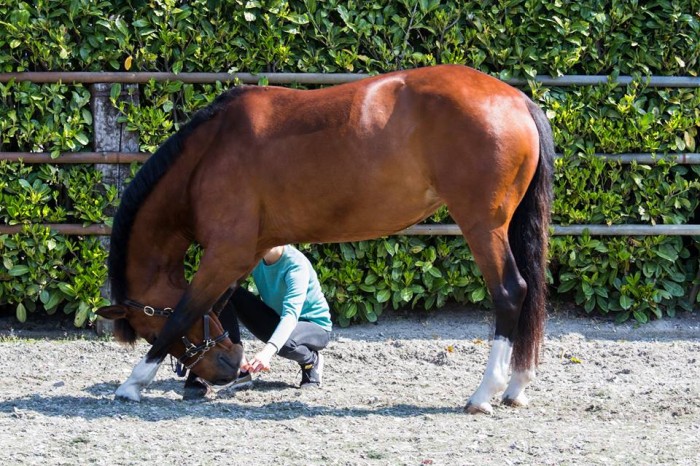
Key elements of equine back rehabilitation
This article discusses the most important elements of rehabilitating a horse with back problems in order to achieve long-term results. The horse’s back is of great importance when carrying a rider and therefor rehabilitation needs to consider restoring function of the axial skeleton muscles.
Management factors that influence rehabilitation of back pain
- Shoeing: Multidisciplinary approach including the veterinarian, physiotherapist and farrier may be needed to get the horses feet into right balance.
- Turnout: Horses that receive no- or minimal turnout are more prone to back injuries.
- Teeth and Mouth: Mouth problems can cause the horse to lifts his head and extends its back. This can start the cycle of tension leading to pain.
- Working Surfaces: During competitions the footing can be very different from the footing at home and the horses muscles may not be adapted to deep- or slippery footing. This can cause muscle soreness, as the back muscles are used to compensate for varying conditions.
- Warming-up and Cooling-down: Cold muscles are more prone to injury. Twenty minutes of slow work (walking and trotting) brings the temperature of the muscles to an appropriate temperature and clears metabolic waste at the end of training.
- Longeing: Longeing for long periods and asking for the same movement can cause muscle fatigue, which may lead to back problems.
- Swimming: This may be contraindicated to developing good back muscles, because horses swim with its head and neck up, its back extended and front legs pulling through the water.
- Blanketing: Blankets that are too tight cause the horse to shorten its stride and compensate through the rest of the body.
Rehabilitative and maintenance exercises
- Stretching: Carrot stretches (low side ways and between the forelegs) Is that effective?
- Posture correction: Gymnastic training
- Muscle and Posture Exercises: To improve coördination and proprioception (random placed pole work, backing up, move in small circles.)
- Ground and Riding Exercises
Physiotherapy
> From: Ridgway et al., Vet Clin North Am Equine Pract. 15 (1999) 263-280. All rights reserved to Veterinary clinics of North America . Click here for the online summary.


